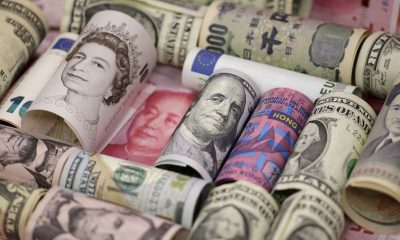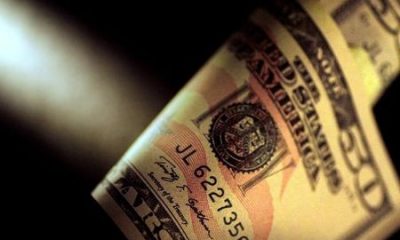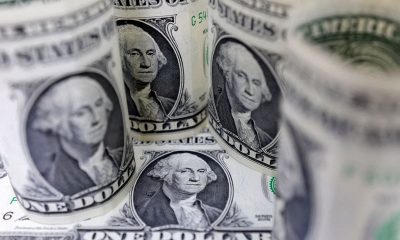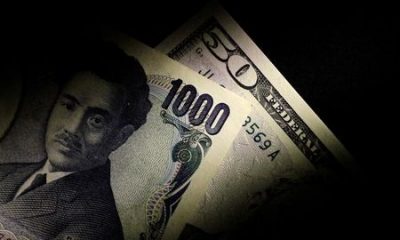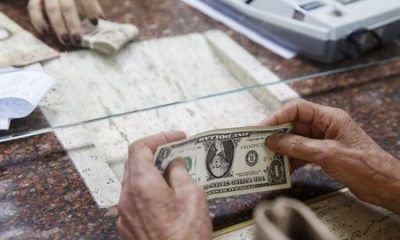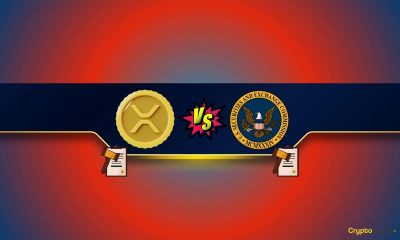Economy
S&P 500, Nasdaq down as decline in megacaps dulls big banks’ shine
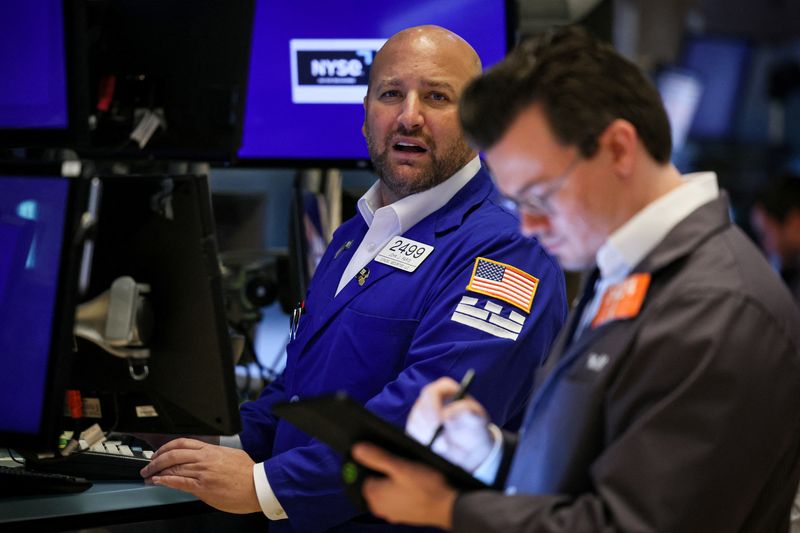

© Reuters. FILE PHOTO: Traders work on the floor of the New York Stock Exchange (NYSE) in New York City, U.S., September 28, 2023. REUTERS/Brendan McDermid/File Photo
By Shashwat Chauhan and Ankika Biswas
(Reuters) – Wall Street’s main stock indexes gained on Friday as upbeat earnings from big U.S. banks fueled optimism about the state of the economy, while Treasury yields eased following a spike in the previous session.
JPMorgan Chase (NYSE:), Wells Fargo and Citigroup (NYSE:) rose between 3% and 5% after trouncing quarterly profit estimates as they benefited from higher interest rates.
The Banks index gained 3.2%, hitting a three-week high.
“The market will breathe a sigh of relief as the solid Citi numbers chime with the good results from JPMorgan and Wells Fargo too, and will go some way toward suggesting that the worst of the banking crisis is now over,” said Stuart Cole, chief macro economist, at Equiti Capital.
“But next year may prove to be more difficult, when the Fed is expected to start cutting rates again and there are still fears remaining over whether the U.S. will avoid a period of negative growth,” Cole said.
Asset manager BlackRock (NYSE:) dipped 1.5% after posting a sharp drop in third-quarter net inflows.
Options traders are bracing for larger-than-usual post-earnings stock price swings for some U.S. banks, despite signs of cooling volatility in broader markets, options data showed.
UnitedHealth (NYSE:) advanced 3% after beating third-quarter profit estimates.
U.S. stocks registered their first decline in five days on Thursday as yields rose after consumer inflation data and weak demand in the auction of U.S. 30-year bonds.
Yields, however, eased on Friday, and the three main U.S. stock indexes were on track to register weekly gains.
Federal Reserve Bank of Philadelphia President Patrick Harker said the central bank was likely done with rate hikes as price pressures show signs of easing.
At 9:39 a.m. ET, the was up 261.95 points, or 0.78%, at 33,893.09, the S&P 500 was up 19.89 points, or 0.46%, at 4,369.50, and the was up 8.70 points, or 0.06%, at 13,582.92.
The energy sector tracked a more than 3% jump in crude prices and led the gains among S&P 500 sectors. It was also poised to be the top weekly performer.
Investors also kept an eye on the conflict in Israel. The country called for all civilians in the northern half of Gaza City to relocate to the south within 24 hours, as it amassed tanks for an expected ground assault in response to an attack by the militant group Hamas.
Dollar General (NYSE:) added 7.5% after the discount store retailer brought back former CEO Todd Vasos to replace Chief Executive Jeffery Owen.
Boeing (NYSE:) shed 3.1% after the planemaker and Spirit AeroSystems (NYSE:) expanded the scope of their ongoing inspections of a production defect affecting 737 Max 8 aircraft. Spirit’s shares were down 4.7%.
Advancing issues outnumbered decliners by a 2.50-to-1 ratio on the NYSE and a 1.03-to-1 ratio on the Nasdaq.
The S&P index recorded 11 new 52-week highs and nine new lows, while the Nasdaq recorded 19 new highs and 115 new lows.
Economy
Russian central bank says it needs months to make sure CPI falling before rate cuts -RBC


© Reuters. Russian Central Bank Governor Elvira Nabiullina attends a news conference in Moscow, Russia June 14, 2019. REUTERS/Shamil Zhumatov/File Photo
MOSCOW (Reuters) – Russia’s central bank will need two to three months to make sure that inflation is steadily declining before taking any decision on interest rate cuts, the bank’s governor Elvira Nabiullina told RBC media on Sunday.
The central bank raised its key interest rate by 100 basis points to 16% earlier in December, hiking for the fifth consecutive meeting in response to stubborn inflation, and suggested that its tightening cycle was nearly over.
Nabiullina said it was not yet clear when exactly the regulator would start cutting rates, however.
“We really need to make sure that inflation is steadily decreasing, that these are not one-off factors that can affect the rate of price growth in a particular month,” she said.
Nabiullina said the bank was taking into account a wide range of indicators but primarily those that “characterize the stability of inflation”.
“This will take two or three months or more – it depends on how much the wide range of indicators that characterize sustainable inflation declines,” she said.
The bank will next convene to set its benchmark rate on Feb. 16.
The governor also said the bank should have started monetary policy tightening earlier than in July, when it embarked on the rate-hiking cycle.
Economy
China identifies second set of projects in $140 billion spending plan


© Reuters. FILE PHOTO: Workers walk past an under-construction area with completed office towers in the background, in Shenzhen’s Qianhai new district, Guangdong province, China August 25, 2023. REUTERS/David Kirton/File Photo
SHANGHAI (Reuters) – China’s top planning body said on Saturday it had identified a second batch of public investment projects, including flood control and disaster relief programmes, under a bond issuance and investment plan announced in October to boost the economy.
With the latest tranche, China has now earmarked more than 800 billion yuan of its 1 trillion yuan ($140 billion) in additional government bond issuance in the fourth quarter, as it focuses on fiscal steps to shore up the flagging economy.
The National Development and Reform Commission (NDRC) said in a statement on Saturday it had identified 9,600 projects with planned investment of more than 560 billion yuan.
China’s economy, the world’s second largest, is struggling to regain its footing post-COVID-19 as policymakers grapple with tepid consumer demand, weak exports, falling foreign investment and a deepening real estate crisis.
The 1 trillion yuan in additional bond issuance will widen China’s 2023 budget deficit ratio to around 3.8 percent from 3 percent, the state-run Xinhua news agency has said.
“Construction of the projects will improve China’s flood control system, emergency response mechanism and disaster relief capabilities, and better protect people’s lives and property, so it is very significant,” the NDRC said.
The agency said it will coordinate with other government bodies to make sure that funds are allocated speedily for investment and that high standards of quality are maintained in project construction.
($1 = 7.1315 renminbi)
Economy
Russian central bank says it needs months to make sure CPI falling before rate cuts -RBC


© Reuters. Russian Central Bank Governor Elvira Nabiullina attends a news conference in Moscow, Russia June 14, 2019. REUTERS/Shamil Zhumatov/File Photo
MOSCOW (Reuters) – Russia’s central bank will need two to three months to make sure that inflation is steadily declining before taking any decision on interest rate cuts, the bank’s governor Elvira Nabiullina told RBC media on Sunday.
The central bank raised its key interest rate by 100 basis points to 16% earlier in December, hiking for the fifth consecutive meeting in response to stubborn inflation, and suggested that its tightening cycle was nearly over.
Nabiullina said it was not yet clear when exactly the regulator would start cutting rates, however.
“We really need to make sure that inflation is steadily decreasing, that these are not one-off factors that can affect the rate of price growth in a particular month,” she said.
Nabiullina said the bank was taking into account a wide range of indicators but primarily those that “characterize the stability of inflation”.
“This will take two or three months or more – it depends on how much the wide range of indicators that characterize sustainable inflation declines,” she said.
The bank will next convene to set its benchmark rate on Feb. 16.
The governor also said the bank should have started monetary policy tightening earlier than in July, when it embarked on the rate-hiking cycle.

 Forex2 years ago
Forex2 years agoForex Today: the dollar is gaining strength amid gloomy sentiment at the start of the Fed’s week

 Forex2 years ago
Forex2 years agoHow is the Australian dollar doing today?

 Forex1 year ago
Forex1 year agoUnbiased review of Pocket Option broker

 Forex2 years ago
Forex2 years agoDollar to pound sterling exchange rate today: Pound plummeted to its lowest since 1985

 Cryptocurrency2 years ago
Cryptocurrency2 years agoWhat happened in the crypto market – current events today

 World2 years ago
World2 years agoWhy are modern video games an art form?

 Stock Markets2 years ago
Stock Markets2 years agoMorgan Stanley: bear market rally to continue

 Economy2 years ago
Economy2 years agoCrude oil tankers double in price due to EU anti-Russian sanctions

